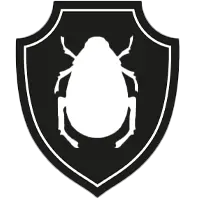Dealing with wasps in your soffit?
I understand how frustrating this problem can be.
As a pest control specialist, I’ve helped many homeowners with this exact issue.
In this article, I’ll explain why wasps are attracted to soffits and provide three practical solutions to get rid of them.
By the end, you’ll have the knowledge you need to take action and keep your home wasp-free.
How to get rid of wasps in soffit – 3 solutions
Wasps making a home in your soffit can be more than a mere annoyance; it can lead to potential stings and structural damage. I’ve gathered three solutions to this problem, ranging from DIY methods to professional assistance, to help you get rid of these unwelcome guests quickly and effectively.
Solution 1: Using commercial wasp sprays and repellents
Utilizing over-the-counter wasp sprays and repellents can be an effective way to rid your soffit of wasps. These products are designed to target the nest without harming other areas. Make sure to follow the instructions on the packaging for safe and efficient use.
Solution 2: Professional pest control services
If the infestation seems extensive or you’re uncomfortable handling it yourself, it might be time to call in the professionals. Pest control specialists, like me, have the tools and expertise to remove wasps from soffits safely and prevent future infestations.
Solution 3: Natural remedies like essential oils and homemade traps
For those looking for a more natural approach, essential oils like peppermint or eucalyptus can be effective in repelling wasps. Homemade traps using simple ingredients like sugar water can also be a cost-effective solution. These methods require patience and regular monitoring, but they can be a valuable part of your wasp-control arsenal.
Now that we’ve covered how to get rid of wasps in your soffit, the next section will help you identify signs of wasps in your soffit, ensuring that you can catch the problem early and take appropriate action.
Identifying signs of wasps in your soffit
Knowing how to deal with wasps in your soffit is vital, but recognizing the problem early can save you a lot of trouble. In this section, we’ll explore different signs that may indicate the presence of wasps in your soffit. These cues will help you take timely action, whether through DIY methods or professional help.
Physical evidence: Nests, damage to the soffit, and other visible signs
Wasps often build nests in sheltered areas like soffits. Look for visible nests, or damage such as holes and scratching on the surface. Early detection can prevent a small problem from becoming a big headache.
Audible evidence: Sounds of buzzing or scratching from within the soffit
Sometimes, you might hear the wasps before you see them. Listen for buzzing or scratching sounds coming from the soffit area. These noises can be an early warning sign that it’s time to investigate further.
Preventative measures: How to regularly check and maintain your soffit
Regular inspections and maintenance can be key in preventing wasps from settling in your soffit. Simple steps like sealing gaps, replacing damaged areas, and monitoring for early signs can save time, money, and stress in the long run.
Having covered how to identify wasps in your soffit, the next section will delve into the health risks and structural damage associated with these unwelcome visitors. This knowledge will further emphasize the importance of addressing this issue with urgency and care.
Health risks and structural damage associated with wasps in soffit
Wasps in your soffit aren’t just a nuisance; they can pose serious risks to both your health and the structural integrity of your home. Understanding these risks is essential in appreciating the urgency of dealing with a wasp infestation. In this section, we will explore both the health dangers and the potential damage to your property.
Health risks: Potential allergic reactions and stings
Wasps’ stings can be painful, and for those with allergies, they can be life-threatening. Ensuring that wasps are not nesting in your home is a crucial step in protecting yourself and your family from unnecessary harm.
Structural damage: How wasps can weaken and damage the soffit over time
Wasps may seem small and insignificant, but they can cause substantial structural damage over time. The materials they use to build their nests can lead to rot and decay in your soffit, compromising its stability and appearance.
Importance of timely action: Why it’s crucial to address the issue promptly
Acting quickly to remove wasps from your soffit isn’t just about convenience; it’s about safety and protecting your investment in your home. Timely intervention can prevent more significant problems down the road, saving you time, money, and stress.
Conclusion
Dealing with wasps in your soffit is a problem that requires prompt attention and informed action.
Whether you choose to handle the situation with DIY methods or professional assistance, the strategies outlined in this article will equip you with the knowledge you need.
Remember, early detection, proper removal, and preventative measures are key to keeping your home safe from both the health risks and structural damage associated with wasps in your soffit.

